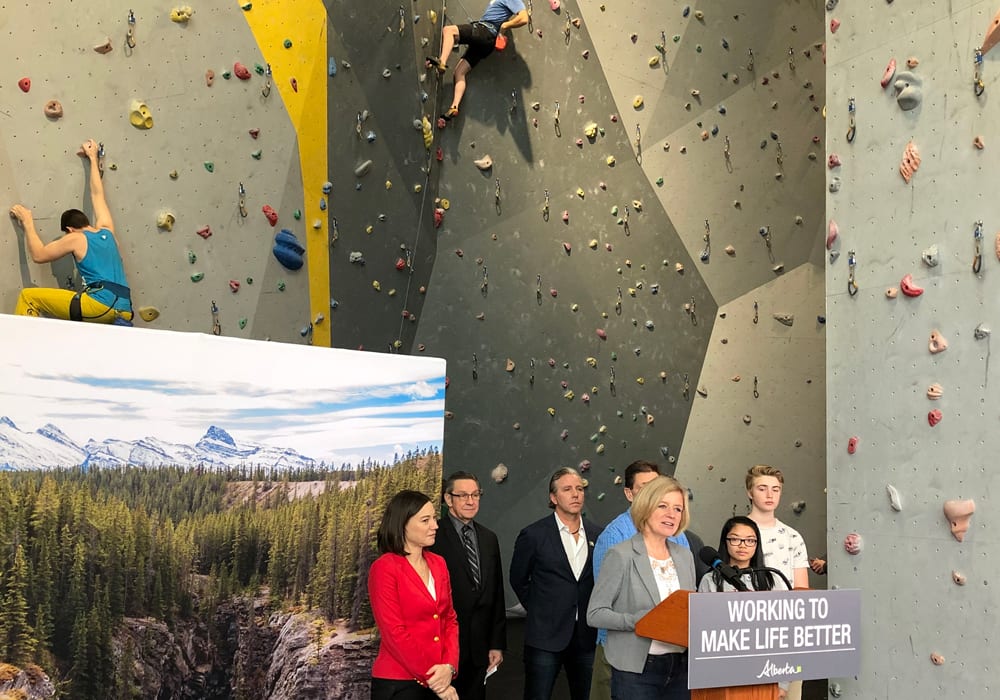The Alberta government is looking to get feedback on a proposed park plan for an area known as Bighorn Country, a massive piece of land in the southwestern and west-central part of the foothills and Rockies.
The proposal, which primarily affects Clearwater and Brazeau counties, includes establishing Bighorn Wildland Provincial Park and creating three new provincial parks. As well, three provincial recreation areas would be created and one recreation area would be expanded.
It would require an investment of $40 million over five years for refurbishing campsites and constructing new ones, as well as for parking lots, trails and staging areas.
Read Also

August rain welcome, but offered limited relief
Increased precipitation in August aids farmers prior to harvest in southern prairies of Canada.
There will be no changes to the roughly 290 grazing lease agreements in the region, said Environment and Parks Minister Shannon Philips following the announcement.
“In these cases… grazing leaseholders maintain their tenure,” she said, noting the administration of the leases remains the same.
However, there could be some impact for grazers, especially if there are more people accessing the land for off-road vehicle use or hiking.
To mitigate that, the province would hire more conservation officers to help with enforcement, as well as make trails and crossings more visible through things like signage. Education and outreach will be used as a first step to deal with nuisances.
There won’t be any changes to the land that’s already used by the public for recreation and hunting. It also won’t affect current forestry or energy-extraction activities.
“In many cases, it’s just a question of better supporting folks getting outside already,” Phillips said.
The province anticipates the new Bighorn park will spur economic development.
During the announcement, Premier Rachel Notley pointed to Kananaskis Country, located west of Calgary, as an example. It was created by former Premier Peter Lougheed due to increased pressures on the eastern slopes, but has now shown to generate $141 million of the province’s GDP annually.
Notley said Alberta is seeing new pressure on parks as more than one million people have moved to the province within the last decade.
While volunteer groups have been able to help manage the area, she said the province has been hearing more concerns about needing better management.
“Some concerns are decades-old and some have come to us through the North Saskatchewan Regional Planning process,” she said. “The demands for recreation are much higher. When left unmanaged, they can create problems.”
She said concerns include user damage to public land, conflicts between different types of users, lack of protection for wildlife and ecosystems, and not enough investment in recreation and tourism.
Bighorn is home to rare and endangered species, such as grizzly bears, harlequin ducks and bull trout. It also provides a clean drinking water source for more than one million people.
“These are serious concerns, but with these concerns, there is also a real opportunity,” Notley said.
In the proposal, the province is providing opportunities for local First Nations and Métis peoples to co-operatively manage the land. The goal is to ensure traditional activities, sacred sites and treaty rights are part of the planning process.
As well, there will be talks with off-highway vehicle organizations to see if they are open to a system that would require them to buy trail passes to use the land.
People looking to view more details on the plan and provide feedback can visit www.talkaep.alberta.ca. The online survey is available until Jan. 31.
Detailed park proposal:
- Establishing Bighorn Wildland Provincial Park — Would legislate protection of headwaters; honour existing off-highway vehicle trails; provide co-operative management strategy and include transparent approach to conservation efforts.
- David Thompson Provincial Park — Aims to protect cultural and ecological areas; allows intentional tourism development; and includes better parking and staging areas, as well as visitor experience services.
- Ya Ha Tinda Provincial Park — Provides access point to Bighorn Wildland Provincial Park; supports nature-based tourism; permits hunting and maintains grazing rights.
- North Saskatchewan Provincial Park — Provides protection for a key biodiversity area and stops industry development.
- Bighorn Dam Provincial Recreation Area — Allows increased enforcement activities for safety concerns; better amenities; future recreation planning; stops industry development; and tourism must take wildlife movement into account.
- Hummingbird Provincial Recreation Area — Improves campgrounds; focus would be developing trails and staging areas.
- Snow Creek Provincial Recreation Area — Opportunity to expand Nordic ski trails and provide staging area for snowmobiles to access trails.
- Shunda Provincial Recreation Area — Focuses on tourism.
Contact jeremy.simes@producer.com
















